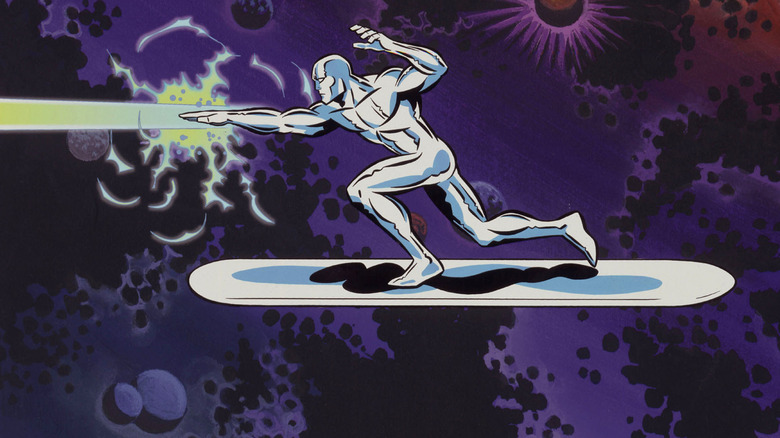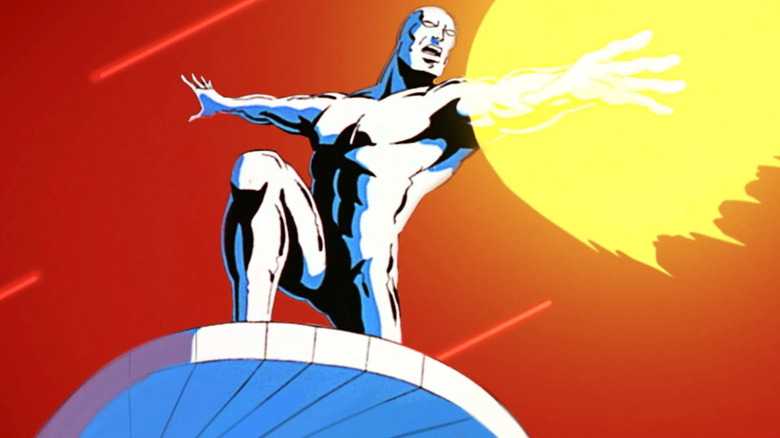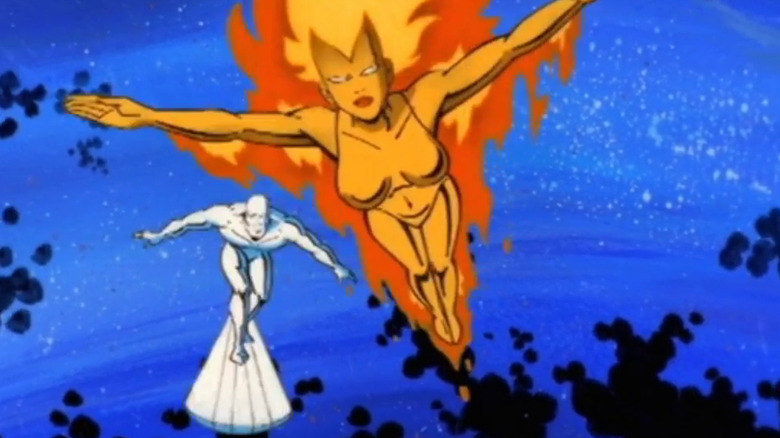Two Star Trek Legends Worked On Marvel's Most Underrated Animated Series
Marvel Comics made their way onto the realm of animated TV frequently, beginning way back in 1966 with the anthology series "The Marvel Super Heroes." The following year, Hanna-Barbera made a "Fantastic Four" animated series, and the company was off to the races. Marvel shows were met with only fitful success and popularity, however. Many youths recall the celebrated "X-Men" TV series from 1992, but fewer likely remember the 1979 series "Fred and Barney Meet the Thing," or the "Fantastic Four" and "Iron Man" shows from 1994.
It's important to remember that the popularity of "Spider-Man" (1994) and "X-Men: Evolution" (2000) are aberrations. The bulk of Marvel animated shows have historically flopped. After the debut of the Marvel Cinematic Universe, the sheer volume of Marvel animated shows increased exponentially, and now it's hard to keep track of it all. Many, many animated shows, both good and bad, kind of fell through the cracks. Many still await rediscovery.
Case in point: in 1998, Larry Brody developed Stan Lee's and Jack Kirby's cosmic adventurer the Silver Surfer into a highly stylized and sharply written Saturday morning cartoon show that aired on Fox Kids. The series used a combination of cel animation and CGI to look as much like Jack Kirby's original art style as possible, sporting thick, dark shadows and bold, sharp-lined character designs. The series felt classical, hearkening back to the boldly philosophical era of Marvel's psychedelic '60s and '70s. There were references to Isaac Asimov. It had complex sci-fi stories and a downbeat tone that was weirdly appealing, and definitely more sophisticated than the Marvel stories on other shows.
The show's classicism may be attributable to some of its writing staff. Harlan Ellison is credited as a story writer on one episode, as is D.C. Fontana, the longtime "Star Trek" contributor. "Silver Surfer" had the same vibe as early "Star Trek" episodes.
Behold! The psychedelic and retro Silver Surfer cartoon
For those unfamiliar with the character, the Silver Surfer was an ordinary humanoid that was kidnapped by a planet-eating cosmic semi-deity called Galactus to be his herald. Galactus absorbed inhabited planets to stay alive, and the Silver Surfer, who could travel many thousands of times the speed of light, would travel ahead to warn people that his boss was coming to wipe them out. His body was turned into a featureless, silvery shape, and he could redirect energy through his body in massive quantities.
The original Silver Surfer comics written by Jack Kirby came when Marvel Comics were more melodramatic and demonstrative (a lot of "Behold! My power!"-style speeches). Silver Surfer dealt with the depth of the cosmos, and was frequently introspective, especially when he thought of the life he lost when Galactus assimilated him. "Silver Surfer" stories were traditionally deep and philosophical.
And who better to write those types of stories into a cartoon show than Harlan Ellison and D.C. Fontana? Ellison, many sci-fi fans may know, was the author of stories like "I Have No Mouth and I Must Scream," and "Repent, Harlequin! Said the Ticktockman." He was also the author of the classic "Star Trek" episode "The City on the Edge of Forever" (April 6, 1967). That's the episode wherein Kirk (William Shatner) is thrown back in time to the 1930s where he falls in love with a local woman named Edith (Joan Collins). Kirk eventually learns, though, that Edith is fated to die soon, and that her death will, in a very roundabout way, determine the outcome of World War II. Kirk has to let her die in order to restore history.
Ellison came up with the story for the episode "Antibody" (April 11, 1998), wherein the Surfer (Paul Essiembre) has to perform life-saving surgery on Galactus, something he is ethically torn about.
D.C. Fonata and Star Trek
The late, great D.C. Fontana was a longtime veteran of "Star Trek" starting with the original series in the 1960s, whereupon she served as the central story editor. She also wrote ten episodes of the series, as well as one episode of "Star Trek: The Animated Series." She stuck with the franchise for many years, continuing with "Star Trek: The Next Generation," for which she write the pilot episode, and four other episodes besides. She was infamously bilked out of a bonus by Trek creator Gene Roddenberry. Her final Trek credit came in 1993, writing the "Deep Space Nine" episode "Dax" (February 14, 1993).
Her "Silver Surfer" episode was called "The Forever War" (May 29, 1998), and followed the Surfer into a pocket dimension occupied by the powerful space warrior Adam Warlock (Oliver Becker). The Surfer had to become enmeshed in a war involving the blue-skinned space aliens, the Kree. Naturally, he ended up aiding Adam Warlock, despite the latter's propensity for violence. It's a story about questioning the value of war and the need for violence. It's classical "Star Trek" stuff.
"Star Trek," of course, was still rolling high in 1998, with "Star Trek: Insurrection" in theaters, and both "Star Trek: Voyager" and "Deep Space Nine" chugging along nicely. The world wasn't hurting for thoughtful sci-fi stories. It is odd, however, that "Silver Surfer" managed to tap into the grandiosity of the infinite cosmos better than the relative soap-operas of modern Trek. If one wants a little hit of classic '60s sci-fi, you don't have to go further back in time than 1998. "Silver Surfer" is currently available on Disney+.


